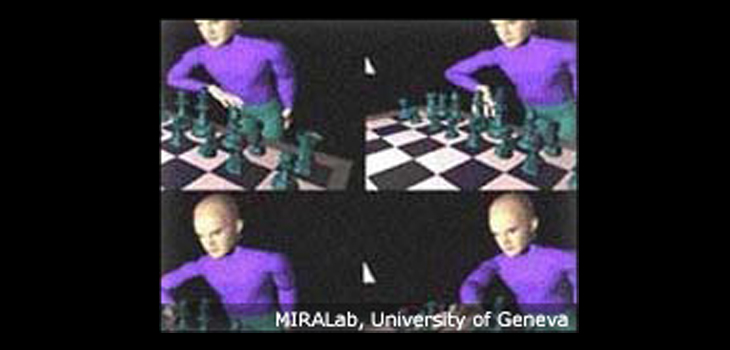
SPP – “Swiss Priority Research Program”
Overview
The main objective is to offer professional consultation using advanced way of communication. This will be based on the Virtual Life Network (VLNET) a networked shared virtual environment framework developed through the first SPP phase. VLNET supports telepresence in a shared environment with the participants represented as 3D virtual humans. During this first phase, we have developed networked collaborative environment prototype and made some demonstration performances with Singapore, Madeira. Recently, we were invited to present a world premiere on interactive tennis between EPFL and Geneva at the opening Ceremony of Interactive Telecom Œ97. Ministers of telecommunication from 50 countries were present, including Mr. Leuenberger from Switzerland. Furthermore, we have participated in the international MPEG-4 subgroup SNHC for recommending standards for facial expression and modeling parameters based on our facial model. In the current SPP phase, emphasis will be given to the applications using lower bandwidth transmission (Internet) employing high performance personal computers (PC) as running platforms. The system will provide innovative tools for communication, exchange and manipulation of multimedia objects. The system will support:
- real time construction of 3D realistic facial models of the participants
- real time facial communication through clones between people at remote sites
- natural user interaction mechanism with the environment – body gestures and speech
- autonomous actors to guide participant
- representation and manipulation of data using multimedia objects – graphics, text, sound and animation.
The project will combine different technologies (networks, virtual reality, animation) and will focus on communication dealing with professional consulting where an expert can stroll around in a realistic three dimensional environment listening to other people and discuss issues. During the virtual consultation participants have better view of each other and more freedom than generally offered in the standard video conferencing. An autonomous virtual consultant will be provided with knowledge of simple tasks to guide the participant seeking consultation in the absence of the real consultant. The results will be shown as pilot demonstrator on PCs using the Internet.
Partners
Hewlett Packard, Europe
USA
www.hp.com
MIRALab, University of Geneva
Switzerland
www.miralab.ch
